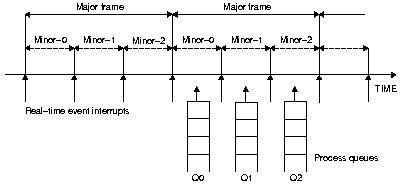

Figure 3-1 : Major and Minor Frames The Frame Scheduler keeps a queue of processes for each minor frame. It dispatches each process once in its scheduled turn. The process runs until it finishes its work; then it yields.
In the simplest case, you have a single frame rate, such as 60 Hz, and every activity your program does must be done once per frame. In this case, the major and minor frame rates are the same.
In other cases, you have some activities that must be done in every minor frame, but you also have activities that are done less often, in every other minor frame or in every third one. In these cases you define the major frame so that its rate is the rate of the least-frequent activity. The major frame contains as many minor frames as necessary to schedule activities at their relative rates.
Sometimes what is here called a "major frame" is called a "process cycle."